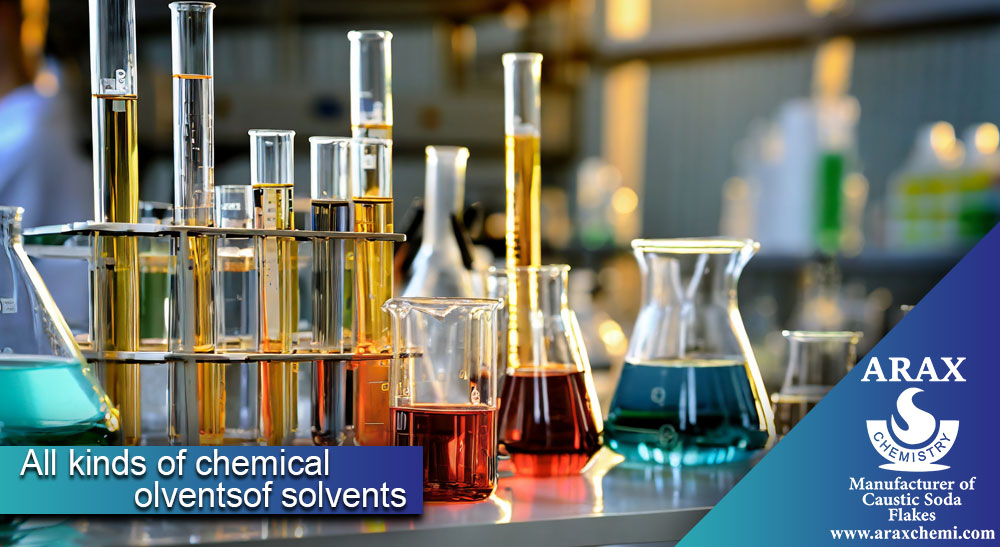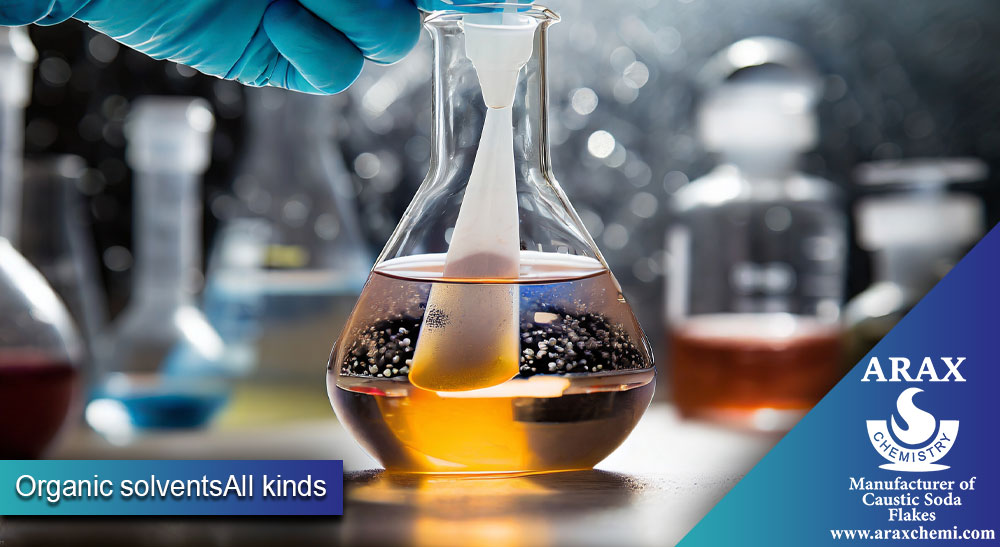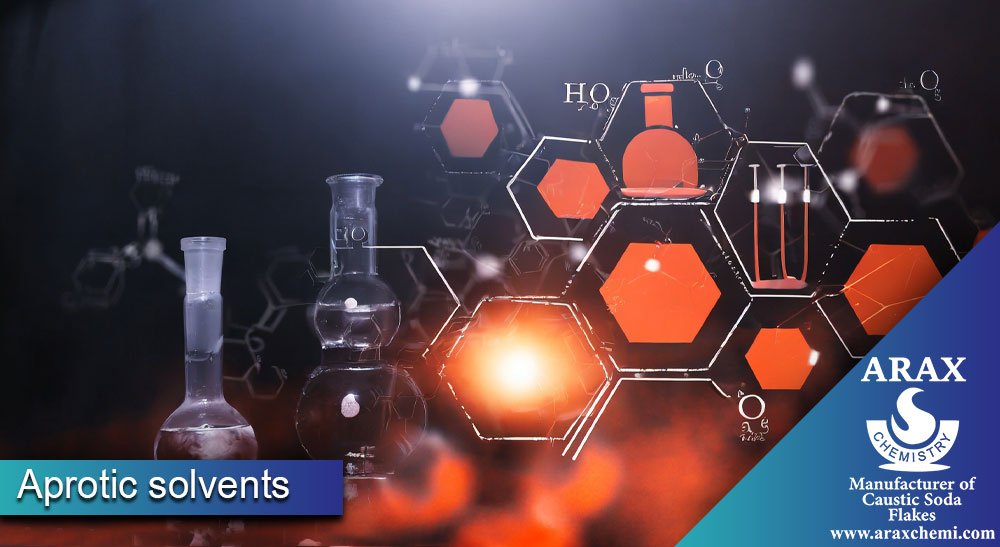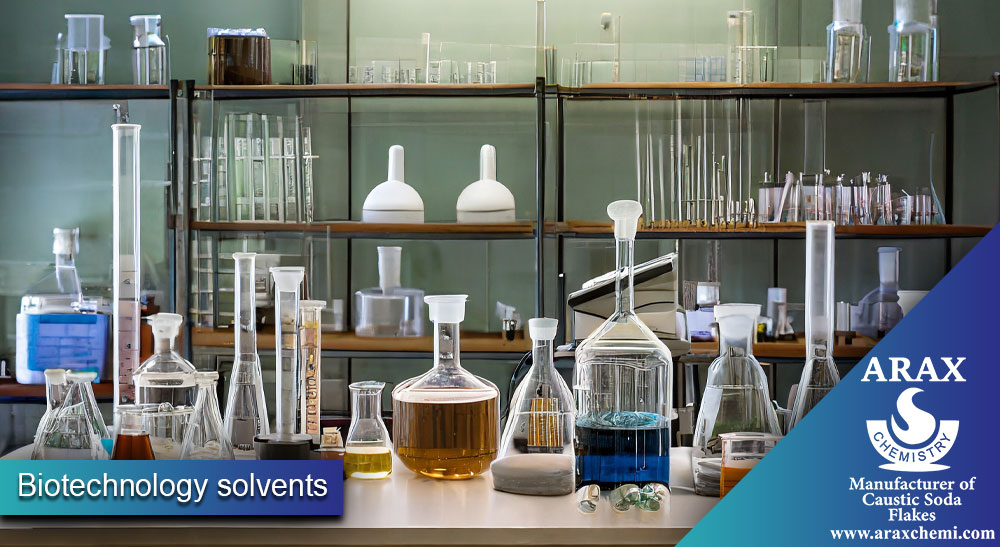A solvent is a chemical substance that dissolves another chemical substance and forms a solution in the form of a homogeneous mixture. The chemical solvent is the component in the solution that has the largest amount and determines the physicochemical form of the substance as solid, liquid or gas. In other words, the solvent is the part that usually makes up more than 50% of a solution, while the solute is the part that mixes in the solvent. Typically, the solute is less than 50% soluble. Solvents are usually, but not necessarily always, liquids and can also be gases or solids.
What are chemical solvents?
Chemical solvents (Solvents) are materials used in chemical and industrial processes to dissolve, mix and extract the required materials. Due to their physical and chemical characteristics, they are able to contain materials in liquid or gas form and hence, they are used in various processes such as the production of medicines, paints, coatings, adhesives, industrial washing, etc. Choosing the right solvent depends on the type of substances to be dissolved and the conditions used. Important features that should be considered in choosing a solvent include solubility, chemical stability, retrievability, toxicity, and compatibility with the environment. The principled use and safety in using chemical solvents is very important. This includes use in well-ventilated areas, use of appropriate personal protective equipment such as gloves and safety glasses, and access to safety information, labels, and information files for each solvent.
All kinds of chemical solvents

At first, due to the presence or absence of carbon in all kinds of solvents, they can be divided into two categories: organic solvents and inorganic solvents. Next, we will explain each one:
-
Organic solvent

Organic solvents consist of organic compounds, that is, compounds that contain carbon. These solvents are usually produced from natural sources such as oil, natural gas, coal and other organic sources. Some common examples of organic solvents are alcohols, esters, ketones, ethers, benzene, toluene, and aromatic hydrocarbons. Organic solvents have various properties and applications. They can be used in various industries such as chemical industries, manufacturing processes, extraction, cleaning, dyeing and cleaning of materials. For example, alcohols are used as common solvents in the paint industry and laboratories, and benzene is used as a solvent in the production of plastics, paints, and other chemicals.
-
Inorganic solvent
Inorganic solvents are composed of inorganic compounds that do not contain carbon and are often extracted from mineral sources. These solvents usually include water, acids, bases and minerals dissolved in them. Some common examples of inorganic solvents include water, sulfuric acid, hydrochloric acid, ammonia, and hydrogen peroxide. Mineral solvents are also used in various industries. They can be used in mining, refining processes
Metals, cleaning industries, battery production, electronics industry and pharmaceutical industries are used. For example, sulfuric acid is used in the oil refining industry and battery production, water in the food industry, electronics and power generation.
Also, solvents can be divided into two categories in terms of dielectric constant: polar and non-polar solvents.
Polar solvents
A special case is mercury, whose solutions are known as amalgam. There are also other metal solutions that are liquid at room temperature. In general, the dielectric constant of a solvent provides an approximate measure of solvent polarity. A polar solvent is a type of solvent that has many partial charges or dipole moments. Bonds between atoms have very different but measurable electronegativities. A polar solvent can dissolve ions and other polar compounds. In fact, polar solvents are strong dipole molecules that interact with other substances through hydrogen bonding. Polar solvents also often break the covalent bonds of solutes and ionize these solutes. The most common solvents used in drug delivery systems are polar solvents, including water and alcohol. Other polar solvents such as alcohols, aldehydes and sugar ketones and other compounds with -OH groups can also be mentioned.
Non-polar solvents
Non-polar solvents have little or no dipolar properties. Although they cannot form dipoles independently; But they can use dipole-dipole interactions to dissolve suitable solutes. Nonpolar solvents have dielectric constants between 1 and 20 and include fixed oils, carbon tetrachloride, and chloroform. Ionic and polar solutes have little or no solubility in non-polar solvents. However, oils, fats and fatty acids dissolve well in non-polar solvents.
Organic solvents
Organic solvents are a type of solvents that contain organic compounds or contain carbon in their molecular structure and are used as a solvent or solvent in various chemical and industrial processes. There are different groups of organic solvents. Alcohols are one of the types of organic solvents that have the hydroxyl functional group (-OH) in their molecular structure. Examples of alcohols include methanol (methyl alcohol), ethanol (ethyl alcohol), and butanol (butyl alcohol). Ethers are compounds that have two ether functional groups (-O-) in their molecular structure. Examples of ethers include methyl ether and ethyl ether. Ketones are compounds that have two ketone functional groups (double carbyl group) in their molecular structure. Examples of ketones include acetone, butanone, and acetone.
Aldehydes are compounds that have an aldehyde functional group (-CHO) in their molecular structure. Examples of aldehydes include formaldehyde and spiremide. Glycols are also compounds that have two hydroxyl functional groups (-OH) in their molecular structure. Examples of glycols include ethane glycol and propane glycol. In addition, there are other organic solvents that can be classified based on their structure and functional group. For example, aliphatic solvents, which belong to the class of alkenes, and aromatic solvents, which, like aliphatic solvents, are non-polar solvents. Also, carbonyl solvents that include esters and have polar properties. There are many variations in organic solvents and each of these solvents has its own characteristics that make them attractive for use in various processes and applications. Some important features that can be effective in choosing an organic solvent are:
Polarity
organic solvents can be polar or non-polar. Polar solvents have hydroxyl (-OH), amine (-NH2) or carboxylic (-COOH) functional groups. Non-polar solvents have functional groups such as hydrocarbons and alcohols. The choice of polar or non-polar solvent depends on the properties and chemical characteristics of the materials used and the desired process.
Solubility
The solubility of an organic solvent in a specific substance shows the ability of that solvent to dissolve that substance. Some organic solvents can dissolve many soluble substances well, while others can only be used for certain substances. Choosing the right solvent based on the solubility of the desired substance can have a great effect on the efficiency and effectiveness of the process.
Physical properties
The physical properties of organic solvents include boiling point, flash point, density and viscosity. These properties can affect the effect of the solvent in processes and working conditions. For example, in thermal processes, choosing a solvent with a suitable boiling point can be an advantage.
Toxicity
Some organic solvents may have high toxicity and are not suitable for use in some processes and applications. In the industry, occupational safety and health, the selection of low-toxicity solvents in accordance with safety standards is of great importance.
Stability
The stability of organic solvents in different conditions including temperature, pressure and pH can be effective in choosing a solvent. Some solvents can work under harsh conditions such as wing temp
Protic solvent
Protic solvent is a type of organic solvent that can have one or more transferable proton (H+) groups. These solvents usually consist of compounds with acidic properties and able to create hydrogen bonds. The proton group can be ionized (such as hydrogen ion H+) or non-ionized (such as hydroxyl group OH) in the protic solvent. Some well-known examples of protic solvents are water (H2O), alcohols such as methanol (CH3OH) and ethanol (C2H5OH), acetic acid (CH3COOH), and ammonia (NH3).
Protic solvents are capable of delivering protons to other compounds in chemical processes due to their transferable proton group. Also, these solvents have the ability to create hydrogen bonds with other substances, which can have a great effect on the behavior and properties of substances in solution. The use of protic solvents is very common in many chemical and biological processes. Water is used as a very important protic solvent in most biological and chemical processes and has unique properties that distinguish it from other solvents. While a protic solvent is capable of forming hydrogen bonds, an aprotic solvent does not act as a hydrogen bond donor. Aprotic solvents are usually less polar and cannot transfer protons to other compounds.
Aprotic solvent

Aprotic solvent is a type of solvent that does not have the ability to form hydrogen bonds completely or partially. In these solvents, generally the absence of transferable proton groups such as the hydroxyl (OH) group makes them unable to act as hydrogen bond donors. Aprotic solvents usually have less polarity than protic solvents. This means no transportable proton ions (H+). Some well-known examples of aprotic solvents include ethers such as diethyl ether (C2H5OC2H5) and methylene chloride (CH2Cl2), ketones such as acetone (CH3COCH3) and nitriles such as styrene nitrile (C6H5CN).
Aprotic solvents are very useful in some chemical processes due to their inability to form hydrogen bonds. They can be used as suitable solvents for reactions that require the separation of ions. Also, aprotic solvents may be a good choice in processes that are sensitive to moisture and the presence of water. Another advantage of aprotic solvents is that they are generally more stable at high temperatures and suffer less evaporation. This can be very important in processes that require high temperatures. In general, the use of aprotic and protic solvents varies depending on the needs of the reaction and the properties of the substances in the chemical system, and the correct selection of the solvent for each specific process and reaction requires special attention.
Chemical solvents in the biotechnology industry

Chemical solvents are compounds that do not exist in nature. There are a limited number of chemical solvents of biological origin, such as ethanol, butanol, and acetone. Terpenes are also natural solvents produced by plants. These solvents are usually toxic to microbial cells. In the chemical industry, chemical solvents are used to contact microorganisms. But in the biotechnology industry, microbes are used in water-based systems because of their preference for water and the problems of chemical solvents for cells. Chemical solvents are often used to extract products from the aqueous phase, but damage to the cells is not important at this stage. In both the chemical and biotechnology industries, organic chemical solvents have advantages over water.
Hydrocarbon solvents
Oil and natural gas are abundant and affordable sources of hydrocarbons. The term “petroleum” is sometimes used to refer to low-boiling liquid oil and liquid natural gas products with a boiling range of 15.6°C to 221°C. These compounds are divided into aliphatic and aromatic structures. Aliphatic hydrocarbons include paraffins, olefins, alkynes, and cycloparaffins. Paraffins can be linear (such as n-butane, n-pentane, and n-hexane) or branched (such as isobutane, isopentane, and isohexane). Olefins are an example of them and ethylene is the most famous example. Cycloparaffins include cyclopentane and cyclohexane.
After refining, crude oil is divided into hydrocarbon gases, light distillates, middle distillates, heavy distillates and residual materials. This division is based on the molecular weight of hydrocarbons and includes materials such as methane, ethane, propane, butane, naphtha, refined oils, gas oil, absorbent oil, technical oils, paraffin wax, lubricating oils, asphalt, coke, refinery sludge and materials is another
last word
Chemical solvents are compounds that are used to dissolve and transport materials in chemical and industrial processes. Aqueous solvents, organic solvents, hydrocarbon solvents and biological solvents are types of chemical solvents. These solvents have various advantages and applications, such as extraction, chemical synthesis, cleaning and decolorization. Choosing the right solvent depends on the properties of the material to be dissolved and the needs of the process. When using chemical solvents, pay attention to health, safety and environmental aspects and act carefully.
ARAX CHEMISTRY is a great manufacturer of Caustic Soda Flakes, which offers its High-quality products.
